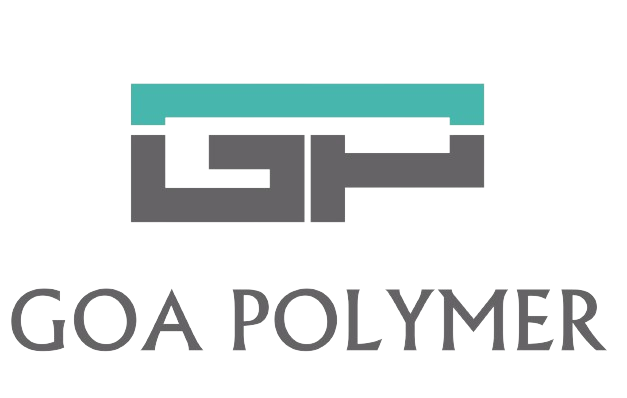In terms of selecting a polymer for specific applications in chemical processing, manufacturing, and electrical industries, among others, two materials appear frequently: PFA (Perfluoroalkoxy) and PTFE (Polytetrafluoroethylene). Both are quite useful fluoropolymers but have some differences in performance that make one of them more suitable than the other for certain tasks.
Here we will take a brief, simple look at PFA and PTFE. A comparison of their properties along with helping you realize the better performance of the latter in different situations.
What is PFA?
PFA, or Perfluoroalkoxy, is a fluoropolymer, close to PTFE but much more similar to TFE. It has exceptional properties resisting heat, chemicals, and electrical charges. Applications involving such performances include piping, coatings, and gaskets for various uses in the chemical industry, as well as insulation in wire and in many uses that require non-stick coatings.
PFA’s chemical structure consists of having a fluorine atom bound to a carbon atom chain; such a chemical structure resists almost all chemicals and therefore features excellent electrical insulating properties. The main reason why PFA is far from other polymers is that it is in the category of being melted and processed, meaning that after melting, it could assume any shape without losing any of its properties.
What is PTFE?
The second common fluoropolymer is PTFE or, more famously, known as Teflon. As with PFA, it also possesses very high-temperature and chemical and electrical resistances. This fluoropolymer is used extensively in non-stick cookware, wire insulation, and seals in valves and pumps.
What makes PTFE stand out is its particularly low friction coefficient, for which it is one of the best materials to support applications requiring smooth, without-friction movement. Highly effective as a dielectric material means that PTFE resists the flow of electric currents.
Key Differences Between PFA and PTFE
Processing Method
One of the major differences between the PFA and PTFE is how they are processed. The PTFE comes in a solid form and it is a hard process to melt or mold it in different shapes. While on the other hand, Can be melted and shaped in the molds early during the PTFE manufacturing process. This makes the PFA more versatile for production and shapes.
Heat Resistance
The PFA and PTFE are excellent in heat resistance. But PFA can endure higher temperatures than PTFE. While PTFE can only handle the temperature 260°C to 300°C. This is why in the heat resistance the PFA is a better option for the environment where the high heat resistance is needed.
Chemical Resistance
Both materials are known for their best resistance to chemicals which are mostly used in pharmaceutical and chemical processing. The PTFE is popular for its superior chemical resistance in comparison to PFA. The PTFE can be considered as a chemical inert which makes it resistant to a wider variety of substances than PFA.
The PFA can be used in high performances and is preferred for handling a wide range of chemicals. It is mostly applicable to piping systems and gaskets.
Electrical Properties
Both PFA and PTFE have excellent electrical insulation properties. PTFE is superior in terms of not contributing electrical conductivity,
making it quite popular for wire insulation as well as other electrical hardware. However, PFA provides excellent solid electrical insulating properties and is most used in cables where material flexibility and melt-processability are very important.
Mechanical Strength
PTFE is a little stronger than PFA in terms of mechanical properties. The tensile strength for PTFE is also greater, which means it could handle more force before breaking apart. PFA is more flexible than PTFE and can be molded more easily, making it ideal for applications such as tubing or film.
Cost
PFA is a little more expensive than PTFE because it has improved processability as well as can sustain at higher temperatures. Still, PTFE is more or less cheap and used in applications that are more sensitive to cost.

Application Use Cases
PFA: It is best used in applications that require a good amount of heat resistance, flexibility, and easy molding. PFA is widely applied in such industries as:
- Chemical processing (piping, gaskets)
- Electrical (wire coverings, insulations)
- Food industry (non-stick coatings)
PTFE: Suitable for chemical resistance, high mechanical strength, and non-stick applications. PTFE is mostly applied in:
- Non-stick cookware
- Electrical insulation
- Seals and gaskets
- Bearings and lubricated components
Performance Comparison: Which is Better?
When it comes to deciding which polymer performs better, the decision depends on the application. Here is a quick comparison:
Property | PFA | PTFE |
Heat Resistance | Up to 300°C (572°F) | Up to 260°C (500°F) |
Chemical Resistance | Excellent, but slightly less than PTFE | Superior, highly inert |
Electrical Insulation | Excellent | Excellent, better than PFA |
Processing | Melt-processable, versatile | Harder to process, not melt-processable |
Mechanical Strength | Lower strength, more flexible | Higher strength, less flexible |
Cost | More expensive | More affordable |
Conclusion
Both PFA and PTFE are good materials, like PTFE washers and PTFE gaskets, but each has unique strengths. Where higher-order chemical resistance and mechanical strength are required, PTFE is usually preferred over PFA. PTFE is best for the applications for frictionless movement or a non-stick property a PFA, is better suited for more demanding applications requiring higher temperature resistance and greater processability.
A more general approach to describe the properties of PFA and PTFE when deciding which one to apply. If you need an easy-to-mold application that can withstand very high temperatures, the option would be PFA. But if you are concerned most with extreme chemical resistance and strength, then PTFE would be the winner.



